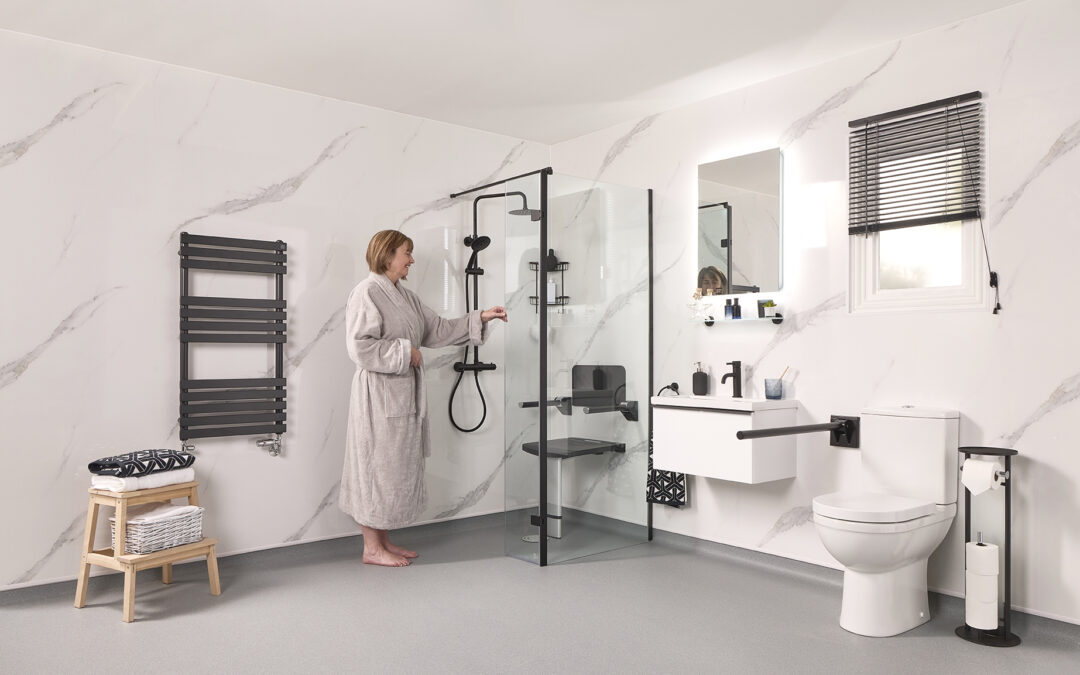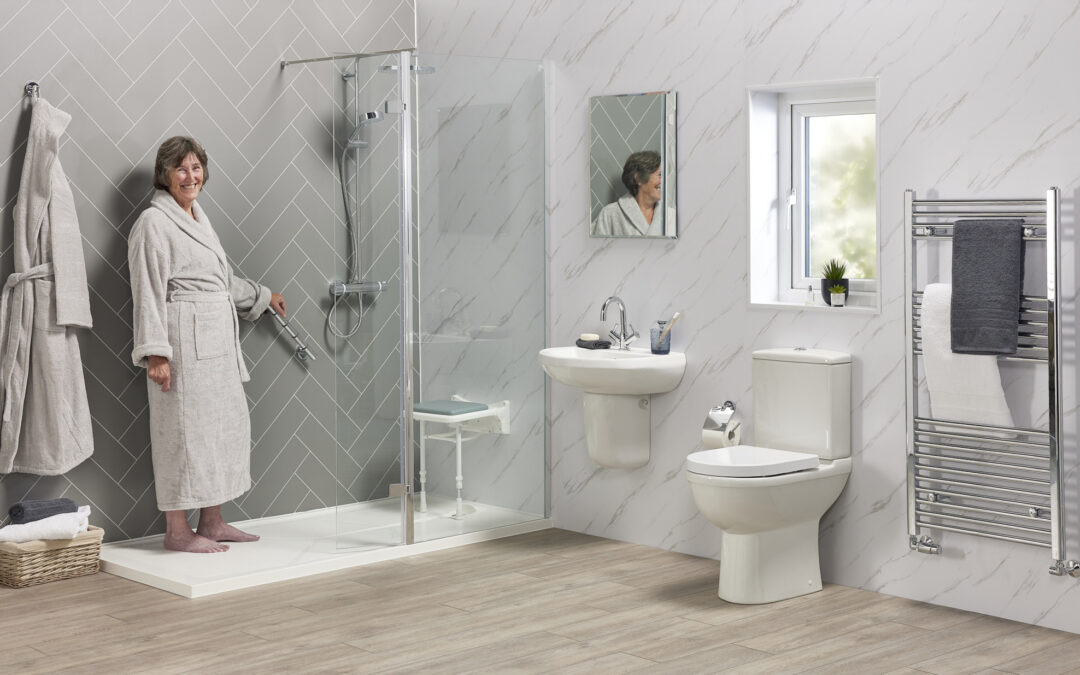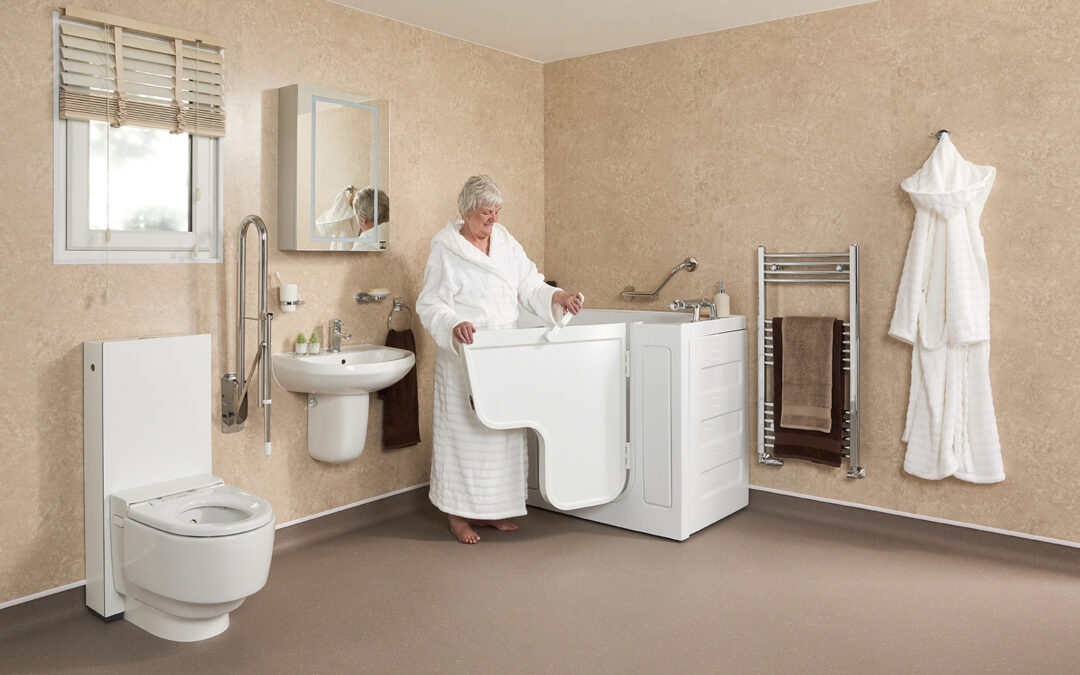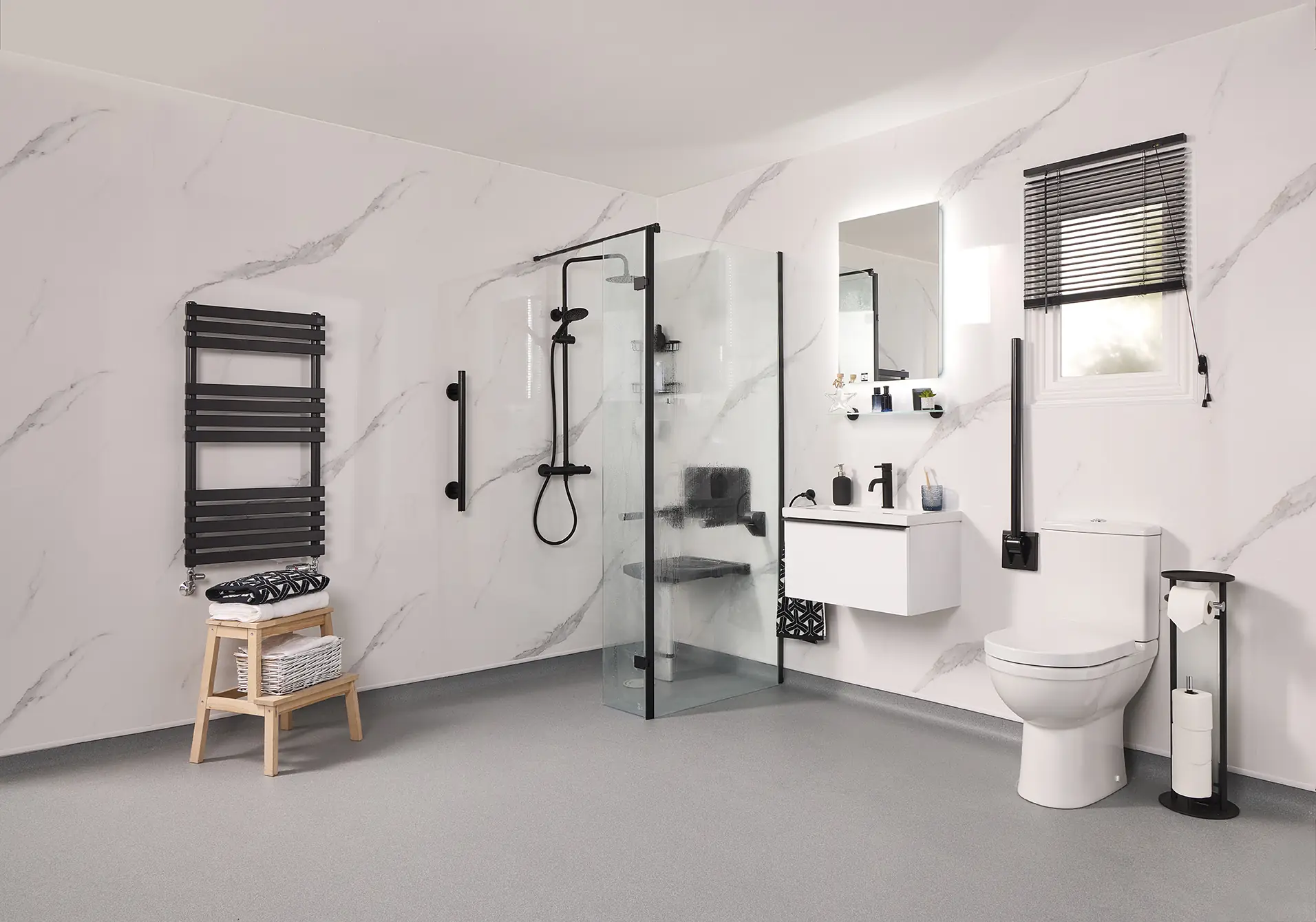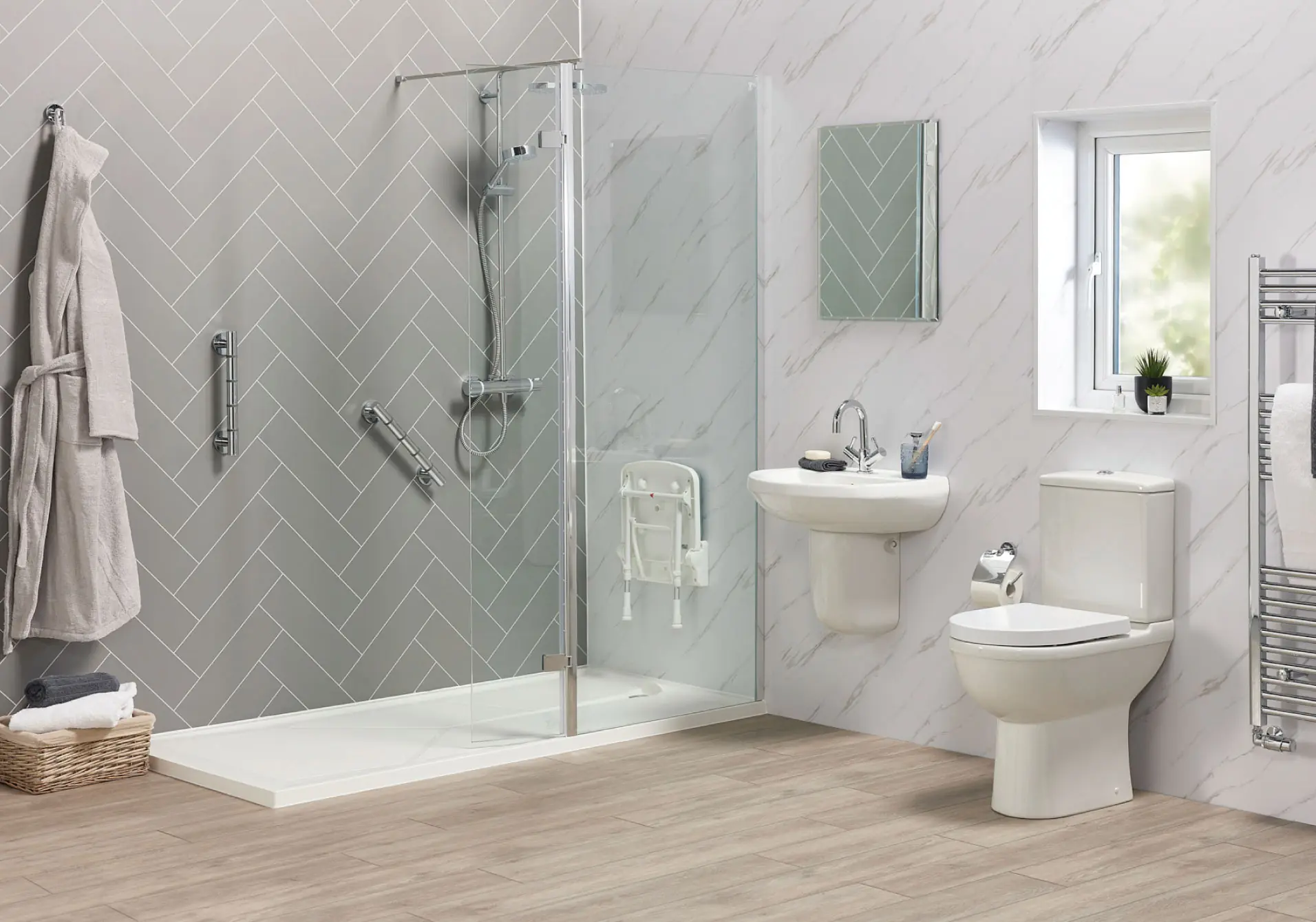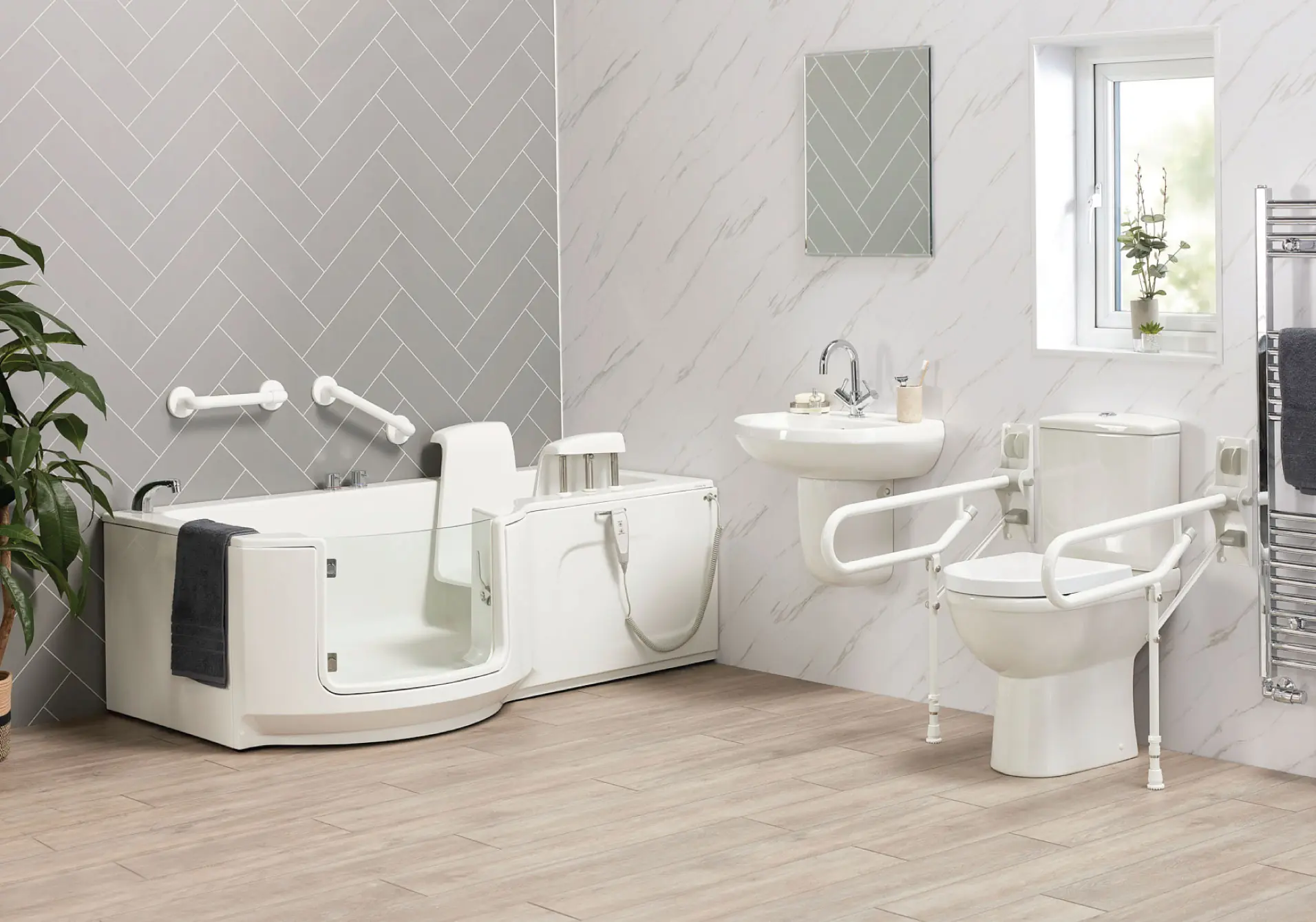To-the-point
Traditional bathtubs are risky because they combine a high step-over with wet, slippery surfaces, awkward transfers, and scalding hazards. The safest fixes: add proper grab rails, a bath board or transfer bench, wet-rated anti-slip (target PTV ≥36), thermostatic mixing valve for safe temperature, and bright lighting—or replace the bath with a walk-in bath or level-access shower when transfers are hard or carer access is needed.
1) Hidden dangers of bathtubs
-
High step-over: typical UK bath height is ~510–550 mm, which many older adults struggle to clear safely—especially when tired or unwell.
-
Slippery surfaces: soapy water and smooth enamel/acrylic increase slip risk. (See PTV thresholds below.)
-
Scalding: water from taps > 44 °C can scald; healthcare guidance limits mixed outlet temps to ≈41 °C (showers) and ≈44 °C (baths). Domestic TMV2 guidance commonly uses 46 °C for baths. Fit a TMV.
-
Transfers & fatigue: sitting down into and up from a low tub is hard; loss of balance is common in bathrooms.
UK falls picture: about 1 in 3 people 65+ and ~1 in 2 people 80+ fall yearly; fall-related emergency admissions for 65+ in England were ≈210,000 in the latest data.
2) Fall risk factors inside the bath area
-
Wet floor & overspray (no screen/deflector).
-
Poor lighting or glare (hard to see edges).
-
No safe hand-holds at entry/exit or where you sit.
-
Rushing (especially night-time toileting).
-
Medicines/vision changes affecting balance. (NHS prevention advice emphasises home modifications and strength/balance.)
3) Affordable modifications
Low-disruption add-ons your OT or installer can fit quickly:
-
Grab rails at entry, seat, and exit points (fixed into structure, not suction only).
-
Bath board (across the rims) or transfer bench (straddles the rim) to enable sit-and-swivel entry.
-
Hand-held shower + return/deflector panel to keep spray in.
-
Wet-rated anti-slip surface; aim for PTV ≥ 36 in wet areas; clean routinely so the texture grips.
-
TMV (TMV2/TMV3) to control hot-water temperature and prevent scalds.
-
Lighting (even, bright) and a night-light path.
4) Walk-in baths vs bath lifts (which makes sense when?)
| Factor | Walk-in bath (with door) | Bath lift / transfer aid |
|---|---|---|
| Entry | Low threshold (step-in) | Keep existing tub; sit-and-swivel from seat/bench |
| Speed/comfort | Warm, full-immersion soak; fill/drain time longer (stay seated while it drains) | Quicker: shower or partial fill while seated on board/bench |
| Water & power | Higher water use; may need plumbing/electrical changes | Minimal utilities; usually no major plumbing changes |
| Failure modes | Door seal maintenance; wait to drain to exit | Device battery/mechanism; tub remains standard |
| Space | Same footprint as tub | Same footprint; kit removable |
| Cost & disruption | Higher / more disruption | Lower / minimal disruption |
| Best for | People who specifically want soaking and can safely step into a low threshold | People who struggle to step over the rim but can use a seated transfer |
-
NHS/Home-adaptations guidance recognises bath lifts/boards as practical options to enable safe bathing.
-
Independent reviews note longer fill/drain times and maintenance as common walk-in bath downsides — factor this into decisions.
5) When to replace your bath (decision signals)
Replace the bath (or re-plan the bathroom) when one or more are true:
-
Repeated near-misses or a fall getting in/out.
-
A carer needs space to assist safely (bath rim blocks transfers).
-
You cannot step over ~510–550 mm even with rails/board.
-
Progressive condition (e.g., balance, strength) and you want to future-proof.
-
Persistent overspray/pooling you can’t solve with screens and drainage.
Replacement options:
-
Walk-in bath if soaking is important and you’re comfortable with longer fill/drain times.
-
Level-access shower (often the safest, lowest-maintenance choice for many homes).
6) Advice for caregivers
-
Use sit-to-stand and sit-and-swivel transfers (board/bench). Keep one hand on a fixed rail.
-
Check water with a thermometer (or elbow) before the person enters; fit TMV to keep temperatures safe (healthcare: ~44 °C bath; domestic TMV2: 46 °C).
-
Never leave a high-risk person unattended in the bath.
-
Keep a call device/phone within reach; avoid locking doors.
Modification vs replacement — at-a-glance
| Your challenge | Quick modification (low disruption) | When replacement is better |
|---|---|---|
| Can’t step over bath rim safely | Bath board/transfer bench + rails, hand-held shower | Walk-in bath (low threshold) or level-access shower |
| Slips on wet surfaces | PTV ≥ 36 anti-slip surface; return/deflector panel | Full re-flooring or level-access shower with textured tray |
| Scald concerns | TMV2/TMV3 and temperature check | Full system upgrade if pipework/controls are obsolete |
| Night-time trips | Night-light, decluttered route, higher-contrast surfaces | Re-plan layout for clearer access; wider doorway if needed |
| Carer needs to assist | Extra rails; wider screen opening | Level-access shower (more carer space) |
What “anti-slip” means in the UK (PTV)
PTV (Pendulum Test Value) → slip risk classification (HSE/UKSRG)
| Your challenge | Quick modification (low disruption) |
|---|---|
| 0–24 | High slip potential |
| 25–35 | Moderate slip potential |
| 36+ | Low slip potential (target for wet areas) |
Aim for PTV ≥ 36 on wet floors (inside the bath/shower area and around it).
Safety checklist
-
Grab rails (entry/seat/exit) fixed into structure
-
Bath board / transfer bench if stepping over is hard
-
Anti-slip surface (PTV ≥ 36) and routine cleaning
-
Return/deflector panel; shower aimed inward
-
TMV fitted; test temperature before bathing
-
Bright, even lighting + night-light route
-
Decluttered floor; remove loose mats/cables
-
Plan for tomorrow: if needs are changing, consider a walk-in bath or level-access shower
FAQs
Why are tubs riskier than showers for older adults?
The high step-over (~510–550 mm) and slippery surfaces make transfers harder than a level-access shower. Add rails/board—or consider replacement if transfers remain risky.
How hot is “too hot” for bath water?
There’s scald risk above 44 °C; healthcare guidance limits baths to ≈44 °C and showers to ≈41 °C. Domestic TMV2 guidance often uses 46 °C for a bath outlet—fit a TMV and check the temperature.
Is a walk-in bath better than a bath lift?
It depends. Walk-in baths give low-threshold soaking but take longer to fill/drain. Bath lifts/boards are quicker, cheaper and use your existing tub. Choose based on mobility, patience with fill/drain times, and preference for soaking.
Where can I get help with equipment?
Ask your local authority for a home assessment; NHS guidance covers adaptations such as bath lifts and rails.




